The images below show examples of cyanobacteria and how it has presented in New Brunswick. In New Brunswick, there are two common types of cyanobacteria blooms: surface blooms and benthic mats.
Cyanobacteria can grow quickly and clump together to form a surface bloom. They usually happen in warmer weather and waters, typically in the late spring until fall.
Surface blooms can appear quickly or overnight. On windy days, they may accumulate near the shore. They can also be suspended at different depths in the water. This can make them harder to see.
A surface bloom can look like surface scum, paint streaks on the water, foam or a mat and is often blue-green in colour. Surface blooms can also be red, brown, or green. They can smell like newly mown grass while older blooms can have a foul smell, sometimes smelling like garbage.
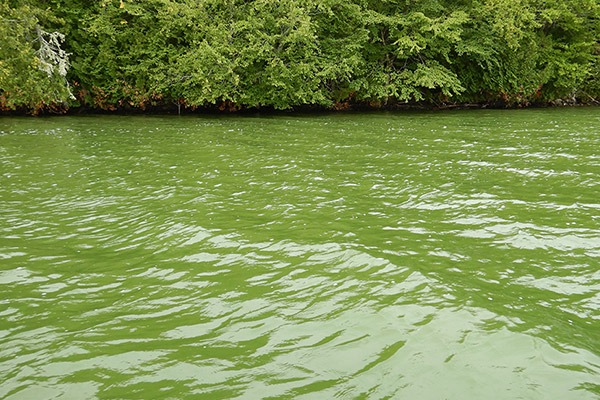
Surface bloom
Example 1: A cyanobacteria bloom has millions of cells throughout the water, resulting in a green “pea-soup” appearance.
Photo credit: Meghann Bruce
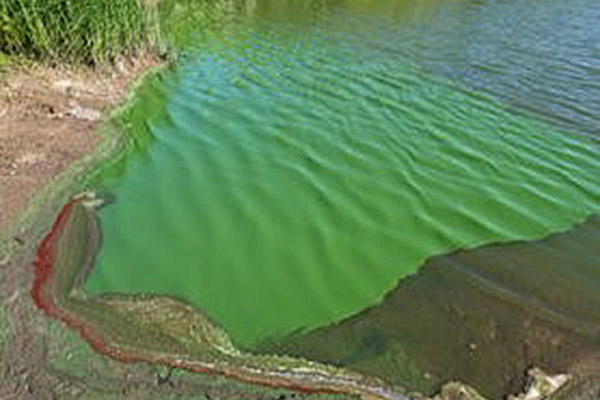
Surface bloom
Example 2: A bloom with a “pea-soup” green appearance and red paint-like streaks.
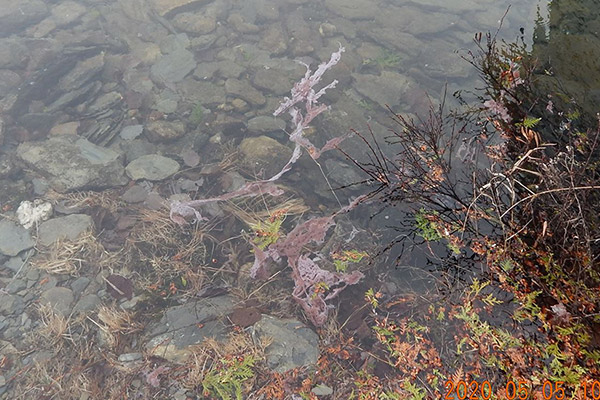
Surface bloom
Example 3: Cyanobacteria bloom with red pigment.
Benthic mats can grow quickly when the water is warm. Benthic mats look like clumps of vegetation, and can look black, brown or dark green in the water. They can also be stuck to rocks or other plants in the water or can be floating either in the water or on the surface.
Benthic mats can also break away from the bottom of a lake or river and wash up along the shoreline. On the shoreline they may look brown or grey once they have dried.
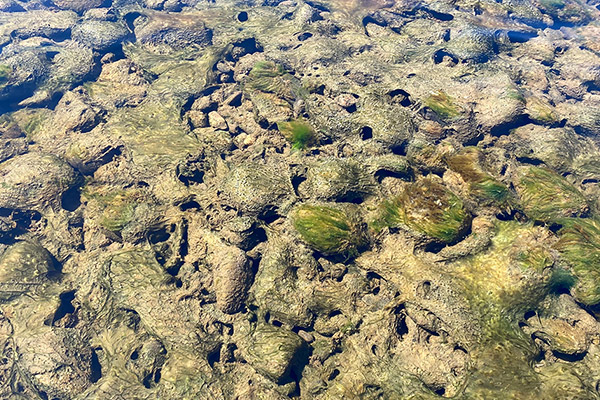
Established mat
Benthic cyanobacteria can be beige, light brown, and dark green as they grow to form a carpet-like mat over individual rocks, having a “webbed” appearance. The bright green longer filaments in this photo are green algae growing among the cyanobacteria.
Photo credit: Meghann Bruce

Submerged mat
Example 1 : The golden area is the cyanobacteria mat, with green algae growing in the background. This mat will eventually lift off the bottom, travelling downriver before washing up along the shore.
Photo credit: Meghann Bruce
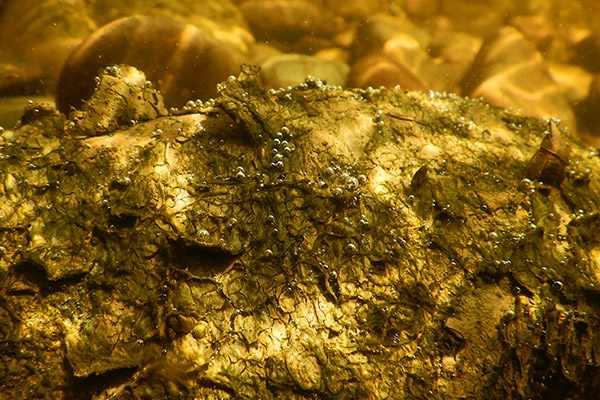
Submerged mat
Example 2 : A dark green cyanobacteria mat growing on a rock underwater. The mat is covered in tiny air bubbles and has started to peel off the rock.
Photo credit: Meghann Bruce
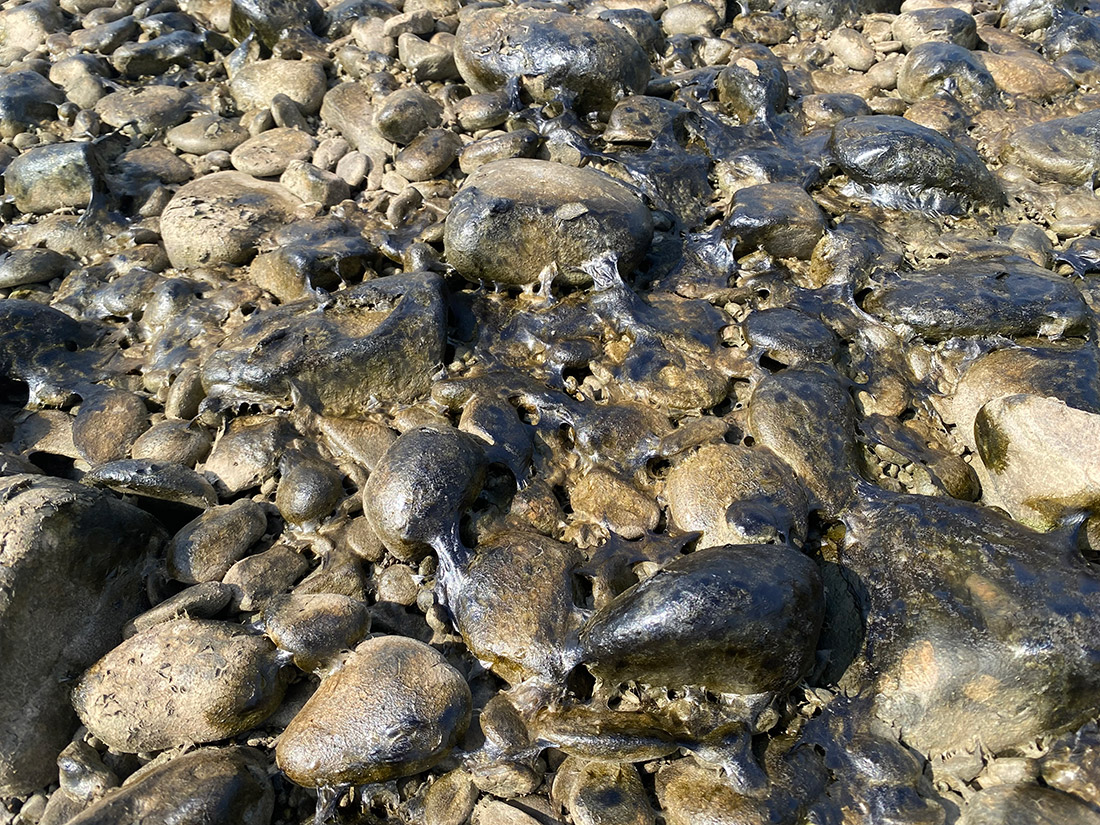
Dried mat
Example 1: When water-levels drop, mats growing on the bottom of a river/lake/stream may be exposed. Exposed mats dry up and become thinner, flat, with colours ranging from grey brown to green black. Often, mats look like “webbing” connecting rocks, but are dry and flakey. If not yet completely dry, they can have a slight shine.
Photo credit: Meghann Bruce
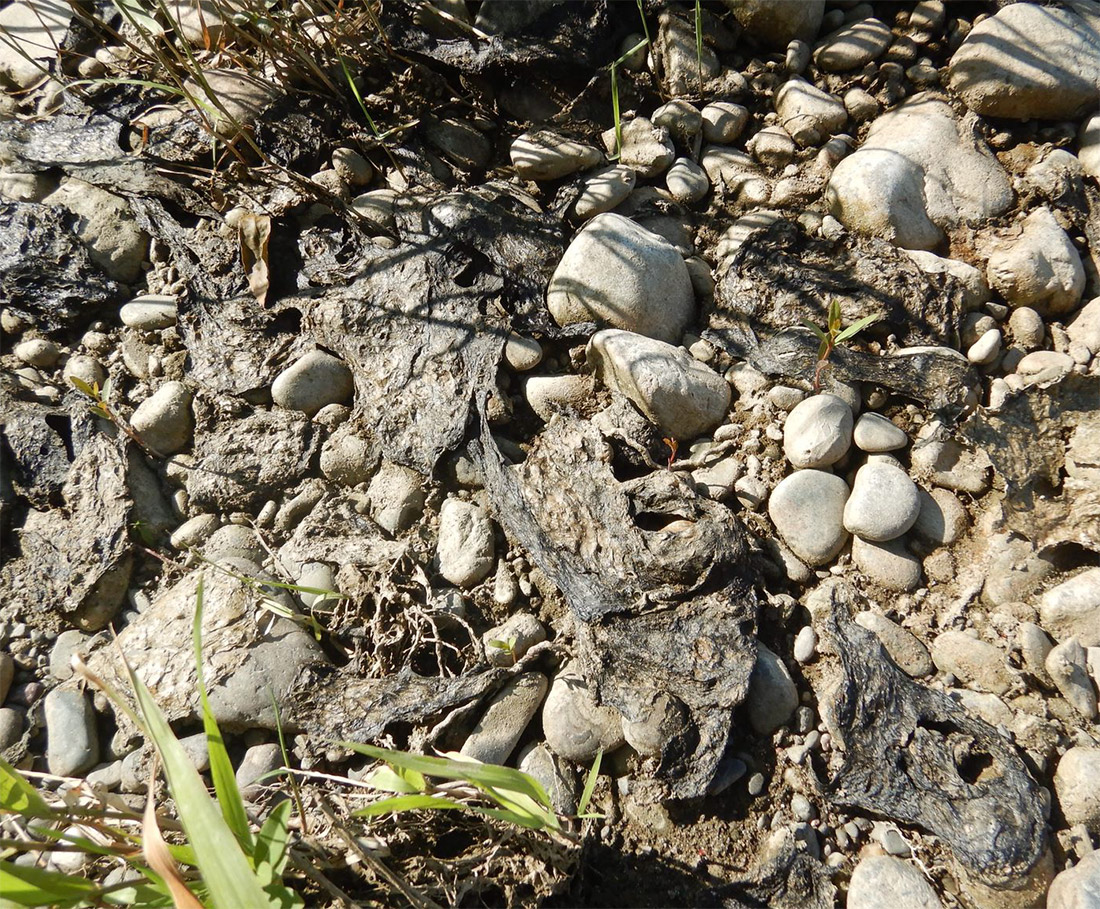
Dried mat
Example 2 : Dried mats can be challenging to spot since they are much thinner and grey/brown in colour. This makes it easy for them to blend in with rocks and vegetation.
Photo credit: Meghann Bruce
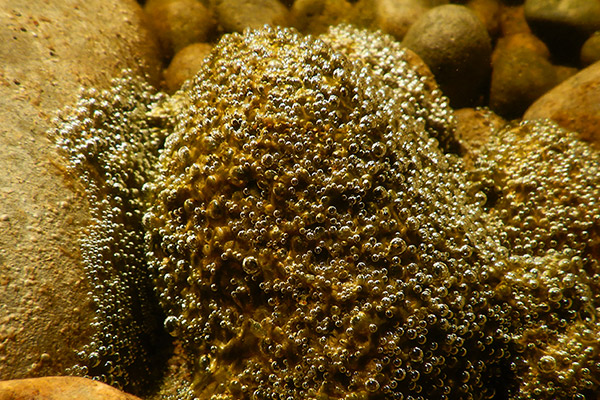
Small mat
A small cyanobacteria mat just starting to grow on a rock underwater. It is a few inches wide, thin, dark green in color and covered in tiny bubbles.
Photo credit: Meghann Bruce
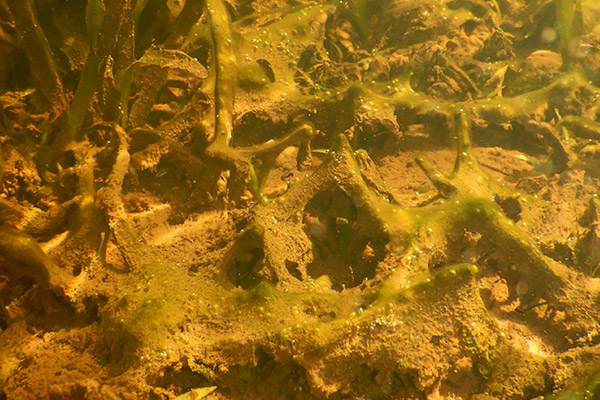
Layer of slime
Cyanobacteria and other algae grow together to form a layer of slime, which can grow on lake bottoms and on underwater leaves of aquatic plants.
Photo credit: Meghann Bruce
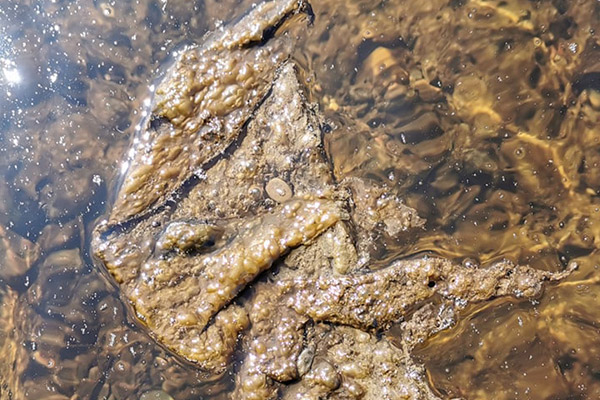
Floating mat on surface
Mature cyanobacteria mats are brownish-gold and up to 1-2 cm thick. They dislodge and float to the water’s surface.
Photo credit: Meghann Bruce
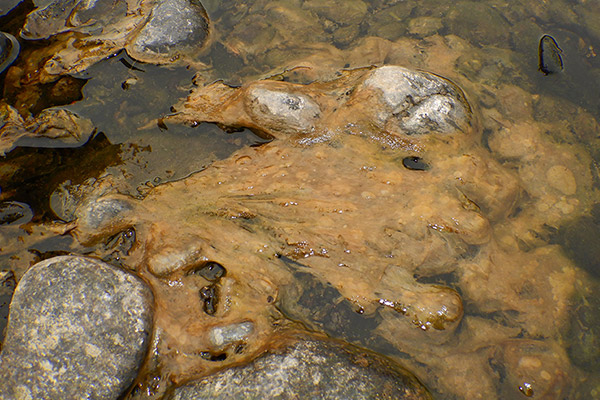
Washed up mat
Dislodged floating cyanobacteria mats wash up on shorelines. When they are wet, they may be dark green, brown, or golden in color. As they dry, they become more grey or greyish brown. Dried mats can still contain toxins and should be avoided.
Photo credit: Meghann Bruce
You may have noticed these signs installed near your local water body. We recently partnered with communities and organizations to install educational signs that share more information about cyanobacteria and how the public can be informed and stay safe.
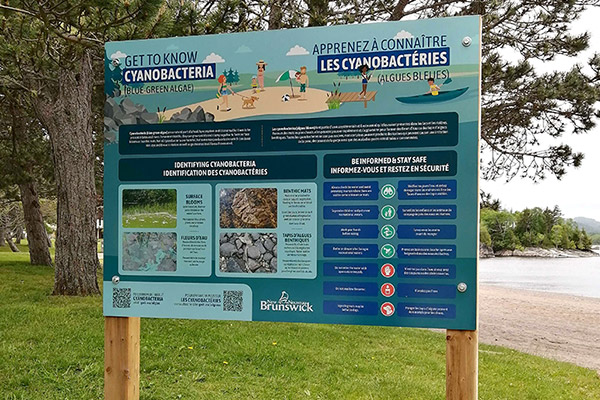
Cyanobacteria educational signs
Signs have been installed near recreational water bodies. The presence of these signs does not mean there has been a confirmed cyanobacteria bloom but rather is an educational resource for the public.
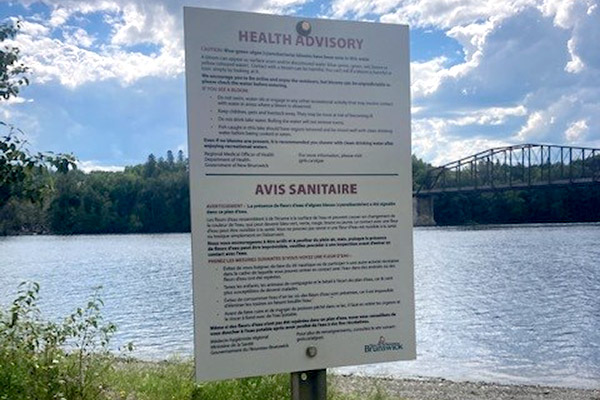
Health Advisory Sign
Health advisory signs are posted when there has been a confirmed cyanobacteria bloom at a given location. Once issued, advisories remain in place indefinitely.